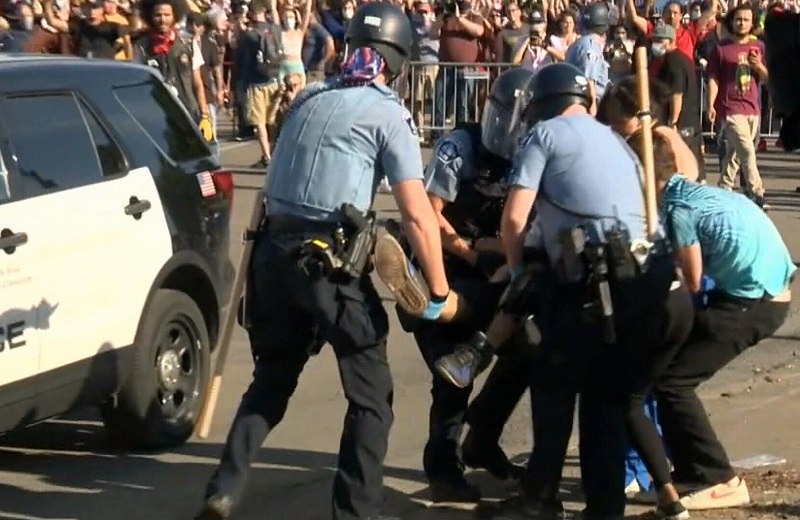
By Chief Joel F. Shults, Ed.D.
Rising rates of violent crime have been blamed on all of the politically acceptable reasons except the truth: law enforcement has not been allowed to do its job.
The question of what causes crime has never been fully answered. The easy, but often inaccurate conclusion, is that when Event B happens after Event A, then Event A caused Event B. The errors that can happen with this assumption are twofold. One is that Event A may simply be the most obvious, loudest, or most visible but other factors are not seen or known. The second is that there may be intervening causes that happen between Events A and B, shifting the course of history.
Any social research will be called into question because all of the factors are out of the researcher’s control. In physical sciences, researchers control all elements and introduce only one variable. The outcome of the experiment can then be contributed to only one thing. Anyone who repeats the experiment the same way will get the same result. Not so in social research. Therefore, commentators are free to toss around theories that may not be provable.
Theory 1 is that COVID restrictions have caused stress that resulted in outbursts of violence. It’s natural to blame COVID for just about any ill that has happened since the beginning of 2020. It’s also natural to imagine that stress leads to violence. Science tells us that stress inhibits judgment, can cause aggression with surges of adrenaline, and can cause physical illness. Connecting violent crime and stress has been a theory for a long time, but the ultimate weakness in the theory is that if COVID causes stress, and stress causes violence, wouldn’t there be even more violence than we’ve seen since virtually every person in the country is stressed out?
In addition, it seems that if COVID isolation provoked violence, a greater percentage of homicides would be domestic violence. Data are not clear about any significant increase in domestic violence-related homicides, although it is likely to have risen, but the ratio of other types of homicides in relation to total murders doesn’t prove this theory yet.
Theory 2 is that because so many firearms were purchased that they were more available and used in more violent crime. There is no question that violent crime involving firearms are frequent, but the population was already saturated with firearms long before 2020. In the US there are enough guns for everyone to have one, and guns are present in at least 40% of households. Gun sales have hit historic highs for reasons that likely include fear of civil disturbances and fear of gun ownership restrictions that may follow from a change in Presidents. More guns means more crimes, in the minds of analysts who want this to be a fact.
The reality is that even though the increase in gun sales may mean more first-time gun owners, that isn’t likely. It also isn’t likely that the criminal element is the population buying up guns and ammo. If there were some known ratio of firearm ownership to violent crime, we could predict a certain rise in crime based on gun sales, but no such predictive ratio exists.
There are other theories but, like everything else in 2020, opinions and data are scrambled and hard to compare to a baseline.
There are reasons to believe the anti-police political rhetoric is the root of the increased violence. Legislators across the country are on a campaign to get and keep more criminals on the street. Prosecution of police officers, release of offenders without bail, increasing liability exposure of police officers, prohibition on enforcing traffic laws, removal of necessary weapons and arrest control techniques, discouraging lawful suspicious person contacts, and excusing criminal behavior in a twisted version of acceptable protest. Police funding is at risk. Recruiting is more challenging. Retirement is more appealing. Why would observers be shocked to see rising violent crime?
Good citizens make rational decisions. They report crime because they trust the police. They buy guns because they know that police are restrained and overburdened. These indicators point to the suppression of policing. Lawbreakers make calculations. They make rational decisions. They figure out risks and rewards. They know that the police are being discouraged and restrained from doing what they were hired to do. They make the calculation that maybe now, criminal activity is worth it.
And maybe it is.